1. Secularism in India – Implicit from Day One, Explicit in 1976 – Polity
Why in News?
The topic of secularism in India has resurfaced in national discourse due to increasing concerns over the role of religion in governance, especially in a diverse and multi-religious society like India. This has reignited debates around the philosophical origins and constitutional interpretation of secularism.
Core Concepts
1. Secularism in the Indian Context
- Indian secularism differs from Western models like:
- French model (Laïcité): Strict state–religion separation.
- American model: “Wall of separation” between church and state.
- Indian model: State maintains equidistance from all religions — not anti-religious, but religiously neutral.
2. Constitutional Position
- The word “Secular” was not originally in the Constitution (1950).
- Inserted in the Preamble via the 42nd Amendment (1976) during the Emergency.
- However, secular principles were already embedded through:
- Fundamental Rights (Articles 25–28): Guarantee religious freedom.
- Directive Principles (Article 44): Talk of Uniform Civil Code — a secular ideal.
3. Jawaharlal Nehru’s Vision
- Emphasized rationality, scientific temper, and non-interference of religion in state matters.
- Warned against the dangers of organized religion breeding dogma and superstition.
4. Historical Roots of Indian Secularism
- Ancient roots: Emperor Ashoka’s edicts promoted religious tolerance.
- Pre-Independence documents:
- Motilal Nehru Committee Report (1928): Advocated religious neutrality.
- Karachi Resolution (1931): Called for fundamental rights including religious freedom.
5. Comparative Global Models
| Country | Secularism Model | Key Features |
|---|---|---|
| France | Laïcité | State strict separation, religious symbols banned in public offices |
| USA | Separationist | Government cannot promote or restrict religion |
| India | Accommodationist | Equal respect for all religions; state can intervene for reform |
| UK/Ireland | State religion exists | Still provide religious freedom |
| Pakistan/Sri Lanka | State religion (Islam/Buddhism) | Minority rights protected on paper |
Contemporary Relevance & Concerns
- Secularism is facing challenges due to majoritarian narratives, which seek to redefine it in religious-nationalist terms.
- Key concern: Diluting secular ideals risks undermining constitutional governance and minority protections.
Concept Simplification:
Think of Indian secularism as a referee in a multi-faith game — the referee doesn’t favor any team (religion), but ensures all play fairly within the rules. In contrast, French secularism doesn’t allow teams to bring their religious uniforms to the field at all.
Exam Connect – Possible Questions
Prelims
- Which of the following statements correctly describes Indian secularism?
A. State supports majority religion only
B. State has no religion and treats all religions equally
C. State promotes atheism
D. Religious education is mandatory in public schools
Answer: B. State has no religion and treats all religions equally - The term “secular” was added to the Preamble of the Constitution by which amendment?
A. 44th Amendment, 1978
B. 42nd Amendment, 1976
C. 52nd Amendment, 1985
D. 93rd Amendment, 2005
Answer: B. 42nd Amendment, 1976 - Which of the following reports first recommended secular principles in pre-independence India?
A. Simon Commission Report
B. Motilal Nehru Committee Report
C. Cabinet Mission Plan
D. Cripps Mission
Answer: B. Motilal Nehru Committee Report
Mains
- “Secularism in India is not the absence of religion, but equal respect for all religions.” Critically analyze this statement with reference to constitutional provisions and judicial interpretations.
- Discuss the evolution of secularism in India from pre-independence times to the post-42nd Amendment period. How does the Indian model differ from the Western concepts of secularism?
- Evaluate the challenges to Indian secularism in the current socio-political context. Suggest reforms to uphold secular principles in governance.
2. Bridging the Skills Gap – India’s Employment Challenge – Economy
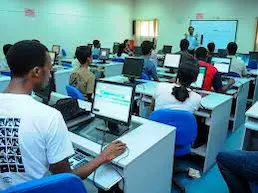
Why in News?
Despite producing one of the largest pools of graduates globally, India faces a growing employment crisis — particularly among educated youth. Recent reports from the EPFO, India Employment Report 2024, and the Future of Jobs Report 2025 highlight a skills deficit that undermines India’s demographic advantage. The need for urgent structural reforms in education, training, and industry is now at the forefront of economic policy discussions.
Core Concepts
1. EPFO as an Employment Indicator
- The Employees’ Provident Fund Organisation (EPFO) manages retirement savings for over 7 crore workers.
- Acts as a reliable barometer for tracking formal employment.
- Post-pandemic recovery: EPFO data (March 2025) shows that youth aged 18–25 make up 18%–22% of new subscribers — suggesting rising formal employment participation.
2. Youth Unemployment Crisis
- According to the India Employment Report 2024:
- Youth (15–29 years) form 83% of India’s unemployed population.
- Paradox: Unemployment is highest among the educated, especially graduates and postgraduates.
- Implies a mismatch between educational qualifications and market demands.
3. Severe Skills Deficit
- 75% of youth struggle to perform basic digital tasks (e.g., emailing with attachments).
- 90% lack spreadsheet handling skills.
- Indicates that formal education is failing to equip students with job-ready skills.
- The digital divide poses a major challenge to employability in a tech-driven economy.
4. Future of Jobs – The Shift Ahead
- Future of Jobs Report 2025 projects:
- 170 million new jobs by 2030 (in AI, data, green tech, etc.).
- 92 million jobs to be displaced due to automation and structural change.
- The implication: Reskilling and upskilling are not optional — they are essential.
5. Structural and Policy Reforms Needed
Educational Reforms Must Include:
- Industry–academia linkages: Real-time input from industries into curriculum design.
- Skill-based curriculum: Integration of soft skills, digital literacy, vocational training.
- Accountability mechanisms: Educational institutions must track and report job placement outcomes.
- Public-Private Partnerships (PPPs): To boost skill infrastructure in rural and underserved areas.
Implications for India
If the education-employment disconnect is not addressed:
- India’s demographic dividend (largest youth population globally) may turn into a liability.
- Could lead to social unrest, economic stagnation, and inequality.
- Strategic investment in human capital is essential for achieving goals of Atmanirbhar Bharat and Viksit Bharat @2047.
Concept Simplification:
Think of India’s job market like a train station:
- The train (jobs) is moving fast with tech and automation.
- But most youth are still waiting on the platform without the right ticket (skills).
- Bridging the skills gap means building the bridge (education reforms) so they can board and move ahead.
Exam Connect – Possible Questions
Prelims
- Which of the following correctly explains the role of EPFO in India’s employment tracking?
A. It conducts the Census
B. It manages job guarantee schemes
C. It manages retirement savings and reflects formal job additions
D. It tracks agricultural employment data
Answer: C. It manages retirement savings and reflects formal job additions - According to recent employment data, which group faces the highest unemployment in India?
A. Illiterate youth
B. Youth with vocational education
C. Educated youth, especially graduates
D. Retired government workers
Answer: C. Educated youth, especially graduates - Which of the following is a major recommendation to bridge India’s skills gap?
A. Reduce education budget
B. Eliminate soft skills training
C. Mandate industry-academia partnerships
D. Focus only on traditional degrees
Answer: C. Mandate industry-academia partnerships
Mains
- “India’s demographic dividend risks turning into a demographic burden.” Examine this statement in the context of youth unemployment and skills mismatch.
- Analyze the challenges posed by the skill deficit in India’s educated workforce. Suggest structural reforms needed in the education and skilling ecosystem to address this issue.
- Discuss the role of digital skills in future workforce readiness. How can India balance technological advancement with inclusive skilling policies?
3. Revising Guidelines for Eco-Sensitive Zones (ESZs) – Environment
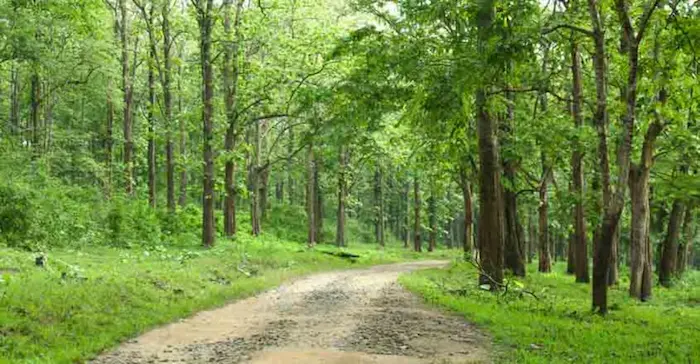
Why in News?
The Standing Committee of the National Board for Wildlife (SC-NBWL) is set to review and update the 2011 guidelines for declaring Eco-Sensitive Zones (ESZs) around national parks and wildlife sanctuaries. This move aims to strengthen environmental governance and tailor conservation efforts to diverse ecological contexts.
Core Concepts
1. What are Eco-Sensitive Zones (ESZs)?
- Also known as Ecologically Fragile Areas (EFAs).
- Declared by the Ministry of Environment, Forest and Climate Change (MoEFCC).
- Act as “shock absorbers” around Protected Areas (PAs), regulating harmful human activities.
- Aim: Buffer zone to minimize human-wildlife conflict and conserve biodiversity.
2. Legal Foundation
- Based on:
- Environment (Protection) Act, 1986 – Section 3(2)(v).
- Environment (Protection) Rules, 1986 – Rule 5(1).
- Backed by the Wildlife Conservation Strategy, 2002, which recommended a 10 km buffer zone around all PAs as a general guideline.
3. Zonation of Activities in ESZs
| Category | Examples of Activities |
|---|---|
| Prohibited | Commercial mining, wood logging, major hydro projects, polluting industries |
| Regulated | Tree felling, road widening, large-scale agriculture, tourism infrastructure |
| Permitted | Rainwater harvesting, organic farming, green energy |
4. Current Scenario
- As of 2025: 347 final notifications of ESZs have been issued.
- In areas where no ESZ is declared, the Supreme Court (2022) has mandated a default 10 km buffer.
- The 2011 guidelines allowed flexibility and emphasized:
- Scientific assessment
- Community participation
- Site-specific zoning
5. Why Revision is Needed
- One-size-fits-all approach (10 km blanket rule) is impractical, especially for:
- Urban sanctuaries (e.g., Guindy NP in Chennai)
- Marine ecosystems
- Need for:
- Context-sensitive demarcation
- Updated biodiversity data
- Stronger community engagement
- Integration with developmental planning
Significance for India’s Environment Policy
- Revising ESZ norms will ensure balance between conservation and development.
- It will help protect ecologically sensitive habitats, while also being realistic in human-dominated landscapes.
- Supports India’s obligations under CBD (Convention on Biological Diversity) and SDG 15 (Life on Land).
Concept Simplification:
Think of an Eco-Sensitive Zone (ESZ) as a protective cushion around a national park. Just as a fragile item is packed with bubble wrap to absorb shocks, a national park is surrounded by an ESZ to absorb human pressure and allow wildlife to thrive undisturbed.
Exam Connect – Possible Questions
Prelims
- Eco-Sensitive Zones (ESZs) are declared under the provisions of which Act?
A. Forest Conservation Act, 1980
B. Environment (Protection) Act, 1986
C. Wildlife Protection Act, 1972
D. Biological Diversity Act, 2002
Answer: B. Environment (Protection) Act, 1986 - Which of the following activities is generally permitted within Eco-Sensitive Zones?
A. Mining
B. Tree felling
C. Organic farming
D. Construction of highways
Answer: C. Organic farming - According to the Supreme Court ruling of 2022, in the absence of a notified ESZ, what is the default radius considered around Protected Areas?
A. 5 km
B. 8 km
C. 10 km
D. 15 km
Answer: C. 10 km
Mains
- What are Eco-Sensitive Zones (ESZs)? Evaluate their role in biodiversity conservation and discuss the challenges in their implementation.
- The recent push to revise the 2011 ESZ guidelines reflects growing ecological complexity. Critically analyze the need for contextualized and flexible environmental regulation frameworks.
- Examine the legal and administrative framework for declaring Eco-Sensitive Zones in India. Suggest reforms to improve stakeholder participation and ecological outcomes.
4. Nominated Members to the Rajya Sabha – Polity
Why in News?
The President of India has recently nominated four eminent individuals to the Rajya Sabha:
- Harsh Vardhan Shringla – Former Foreign Secretary
- Ujjwal Nikam – Noted public prosecutor
- C. Sadanandan Master – Social worker
- Meenakshi Jain – Historian
This move has brought renewed attention to the constitutional provision of nominating members to the Rajya Sabha.
Core Concepts
1. Constitutional Basis
- Article 80(1)(a): Empowers the President to nominate 12 members to the Rajya Sabha.
- Article 80(3): Specifies that these members should be individuals with special knowledge or practical experience in:
- Literature
- Science
- Art
- Social service
2. Fourth Schedule
- The nomination process and allocation of seats are linked to the Fourth Schedule of the Constitution.
- However, the actual nomination provision stems directly from Article 80, not Article 4(1), which deals with laws related to reorganization of states.
3. Purpose of Nomination
- To enrich parliamentary debates with expertise and domain knowledge from outside electoral politics.
- Allows distinguished professionals to contribute to nation-building through legislative input.
4. Rajya Sabha Composition
| Category | Number of Seats |
|---|---|
| Elected Members | 233 |
| Nominated Members | 12 |
| Total | 245 |
- The Rajya Sabha is a permanent body — not subject to dissolution.
- 1/3rd of members retire every two years, with elections held for vacant seats.
5. Tenure & Voting Rights
- Tenure: Nominated members serve for six years.
- Voting Rights:
- Cannot vote in the Presidential election
- Can vote in the Vice-Presidential election
6. Political Affiliation Rules
- As per Article 99 (read with Tenth Schedule):
- Nominated members may join a political party within six months of nomination.
- After this period, if they join a party, they can be disqualified under the anti-defection law.
7. Powers and Role of Nominated Members
- Equal rights in all legislative functions, including:
- Debates and discussions
- Introduction of private member bills
- Participation in committee work
- Though unelected, they represent civil society’s voice in Parliament.
Concept Simplification:
Think of nominated members as experts brought into Parliament — just like guest professors are invited to university panels to enrich discussions. They don’t contest elections, but their knowledge is vital for informed law-making.
Recent Context Significance
- The latest nominations reflect a diverse pool of expertise: foreign policy, criminal law, grassroots social work, and history.
- Reinforces the vision of Parliament as a multi-disciplinary platform and not just a political battleground.
Exam Connect – Possible Questions
Prelims
- Under which article of the Constitution can the President nominate members to the Rajya Sabha?
A. Article 75
B. Article 80
C. Article 99
D. Article 324
Answer: B. Article 80 - Which of the following statements about nominated members of the Rajya Sabha is correct?
A. They are elected by the President
B. They cannot participate in debates
C. They can vote in the election of the President
D. They can vote in the election of the Vice President
Answer: D. They can vote in the election of the Vice President - Which of the following fields are recognized for Rajya Sabha nominations?
A. Sports and Business
B. Literature, Science, Art, Social Service
C. Engineering and Medicine only
D. Politics and Public Administration only
Answer: B. Literature, Science, Art, Social Service
Mains
- Discuss the constitutional provisions and the significance of nominated members in the Rajya Sabha. How do they contribute to the legislative process in India?
- The presence of nominated members in the Rajya Sabha reflects the idea of bringing domain expertise into politics. Do you think this provision strengthens democratic governance? Justify your answer.
- “Nominated members act as a bridge between civil society and Parliament.” Examine this statement with reference to recent appointments and their potential impact.
5. India’s Turn to Repay the Green Revolution Debt – Environment
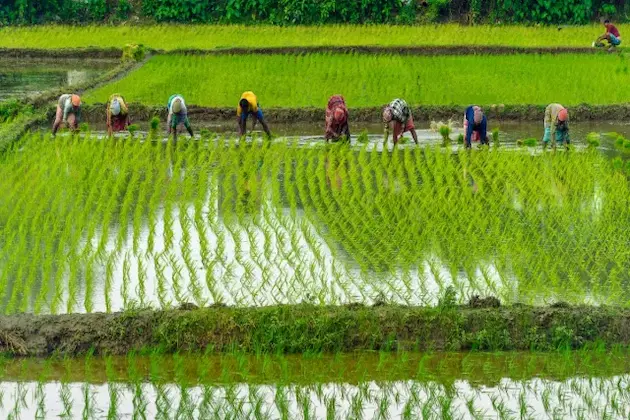
Why in News?
The closure of USAID (U.S. Agency for International Development) by the Trump administration as of July 1, 2025, has significantly impacted global agricultural research, particularly institutions like CIMMYT. With USAID’s withdrawal, India — a major beneficiary of the Green Revolution — is now being urged to take greater responsibility in supporting international agricultural research bodies.
Core Concepts
1. What Was the Green Revolution?
- A technological and agricultural movement during the 1960s–70s.
- Aimed to tackle food insecurity in developing nations, including India.
- Introduced high-yielding varieties (HYVs) of crops, particularly wheat and rice, alongside:
- Use of chemical fertilizers
- Irrigation expansion
- Mechanized farming
- In India, it led to a dramatic rise in food grain production, especially in Punjab, Haryana, and western UP.
2. Role of CIMMYT and Norman Borlaug
- CIMMYT (International Maize and Wheat Improvement Center): Based in Mexico.
- Developed semi-dwarf wheat varieties such as:
- Lerma Rojo 64A
- Sonora 63
- Norman Borlaug, affiliated with CIMMYT, is often called the “Father of the Green Revolution.”
- CIMMYT’s work helped India raise wheat yields from 1–1.5 tonnes/ha to 4–4.5 tonnes/ha.
3. USAID’s Support and Its Closure
- USAID was a major funder of agricultural R&D globally.
- In 2024, USAID contributed $83 million to CIMMYT’s total funding of $211 million.
- Its shutdown severely threatens international food research, particularly in developing countries.
- USAID’s support also extended to IRRI (International Rice Research Institute) in the Philippines.
4. India’s Agricultural Research Institutions
- Indian institutions like:
- IARI (Indian Agricultural Research Institute)
- ICAR (Indian Council of Agricultural Research)
- Adapted CIMMYT’s genetic material to local agronomic and climatic conditions.
- Their role was crucial in making imported HYVs suitable for Indian soils and climate.
5. India’s Role Going Forward
- As a mature agricultural economy, India must now:
- Invest in global R&D institutions like CIMMYT and IRRI.
- Support international collaborative research to ensure future food security.
- Strengthen its own agricultural innovation ecosystem.
- Prioritize climate-resilient crop research, given the challenges of global warming, water scarcity, and soil degradation.
Implications for India
- India has benefited historically from global research institutions.
- A strategic investment in CIMMYT/IRRI is now both an ethical repayment and a pragmatic policy to safeguard:
- Food security
- Climate-resilient agriculture
- Geopolitical influence in South-South cooperation
Concept Simplification:
Think of India as a student who once received a scholarship (Green Revolution support). Now, as a successful professional, India is being asked to fund future scholarships (support global agricultural R&D) — ensuring others benefit the same way.
Exam Connect – Possible Questions
Prelims
- CIMMYT, recently in news, is associated with which of the following?
A. Climate monitoring
B. Wheat and maize research
C. Water pollution control
D. Solar energy innovation
Answer: B. Wheat and maize research - Norman Borlaug is associated with which of the following?
A. First irrigation project in India
B. Development of India’s Five-Year Plans
C. Green Revolution and high-yielding wheat
D. Founder of IRRI
Answer: C. Green Revolution and high-yielding wheat - Which Indian institution played a major role in adapting CIMMYT wheat varieties to Indian conditions?
A. CSIR
B. ISRO
C. IARI
D. BARC
Answer: C. IARI
Mains
- “India owes a part of its food security success to international cooperation.” In light of the recent closure of USAID, examine India’s responsibility in supporting global agricultural research institutions like CIMMYT and IRRI.
- Analyze the contribution of the Green Revolution to India’s agricultural growth. What are the emerging challenges in replicating such success today?
- Discuss the implications of declining international agricultural research funding on India’s long-term food security. How should India respond?
6. Sulphur Dioxide Emissions, FGDs, and Public Health – Environment
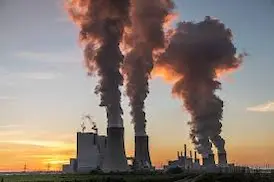
Why in News?
The Environment Ministry of India has exempted most coal-fired power plants from the mandatory installation of Flue Gas Desulphurisation (FGD) systems — a major reversal from its 2015 notification. This decision raises concerns about air pollution control, particularly the emission of Sulphur Dioxide (SO₂) and its implications for public health and environmental sustainability.
Core Concepts
1. What is Sulphur Dioxide (SO₂)?
- A toxic air pollutant released primarily through coal combustion in thermal power plants.
- Major contributor to:
- Respiratory illnesses
- Acid rain
- Haze and visibility reduction
- Soil and crop damage
2. Flue Gas Desulphurisation (FGD) Systems
- Technology used in coal power plants to remove SO₂ from flue gases before release into the atmosphere.
- Types include wet scrubbers, dry scrubbers, and spray dryers.
- First mandated in 2015 to curb SO₂ emissions from thermal power plants.
3. Why the Exemption?
| Justification | Explanation |
|---|---|
| Low sulphur in Indian coal | Perceived as less polluting compared to imported high-sulphur coal |
| High costs of FGD installation | Cited by private power producers, especially older plants |
| Limited vendor capacity | Only 8% of plants installed FGDs since 2015 |
| COVID-19 delays | Pandemic disrupted supply chains and implementation |
| Emerging climate science | Some studies suggest sulphates from SO₂ may have temporary climate-cooling effects |
Criticism: These arguments undermine public health and weaken long-term environmental regulation.
4. Health and Environmental Impacts of SO₂
- Human Health:
- Causes asthma, bronchitis, and lung irritation
- High-risk groups: children, elderly, people with respiratory conditions
- In Delhi and other urban centers, SO₂ spikes linked to hospital surges in winter
- Environmental Damage:
- Forms acid rain, degrading soil and water bodies
- Reduces crop productivity and damages natural ecosystems
- Affects visibility and contributes to urban haze
5. Governance Concerns and Policy Dilution
- Exemptions reflect inconsistencies in regulatory enforcement:
- Based more on political and geographic considerations than on scientific standards
- Raises questions about:
- Environmental accountability
- Transparency in decision-making
- Government’s commitment to the 2015 Paris Agreement and air quality goals
6. Need for Public Debate Before Policy Changes
- Ensures democratic accountability in environmental policymaking
- Allows scientific scrutiny of government claims
- Protects vulnerable populations from the impacts of pollution
- Builds public trust in environmental governance
Concept Simplification:
Think of FGDs as air filters for coal power plants. Just like air purifiers trap harmful dust and gases in homes, FGDs remove SO₂ from industrial emissions. Exempting plants from installing them is like turning off a purifier during a dust storm — a health and safety hazard.
Exam Connect – Possible Questions
Prelims
- What is the primary function of Flue Gas Desulphurisation (FGD) systems?
A. Water purification
B. Noise reduction in industries
C. Removal of sulphur dioxide from power plant emissions
D. Waste segregation
Answer: C. Removal of sulphur dioxide from power plant emissions - Which of the following health conditions is most directly associated with sulphur dioxide exposure?
A. Diabetes
B. Asthma and bronchitis
C. Osteoporosis
D. Skin cancer
Answer: B. Asthma and bronchitis - Which of the following is an environmental effect of SO₂ emissions?
A. Ozone depletion
B. Acid rain formation
C. Global warming through methane emissions
D. Coral bleaching
Answer: B. Acid rain formation
Mains
- Critically examine the implications of exempting coal-fired power plants from installing Flue Gas Desulphurisation (FGD) systems on public health and environmental governance.
- Discuss the role of sulphur dioxide as both a pollutant and a potential climate influencer. Should India relax emission standards based on emerging scientific studies?
- “Environmental regulations must balance scientific evidence, economic feasibility, and public health.” In the context of recent FGD exemptions, discuss the challenges in implementing such balanced policies in India.
7. Recognising India’s Open Ecosystems – Grasslands, Deserts & Savannas – Environment
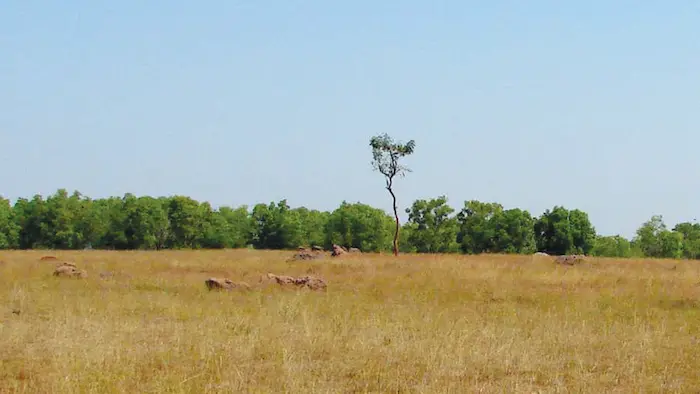
Why in News?
Environmental experts are raising concerns over India’s continued misclassification of ecologically rich open ecosystems like grasslands, savannas, and deserts as “wastelands.”
This outdated and ecologically harmful classification undermines biodiversity, climate resilience, and indigenous community livelihoods, prompting calls for policy reform and ecological recognition.
Core Concepts
1. What are Open Ecosystems?
- Include:
- Arid deserts
- Grasslands
- Savannas
- Scrublands
- Characterized by:
- Sparse tree cover
- Dominance of herbaceous and shrubby vegetation
- Adaptation to environmental extremes
Ecological Importance
- These ecosystems:
- Support unique biodiversity (e.g., Great Indian Bustard, Indian wolf)
- Play vital roles in carbon sequestration, especially soil carbon
- Maintain natural hydrological cycles
- Offer buffer zones against desertification
2. Colonial Legacy of ‘Wastelands’
- India’s current land-use classification system still reflects colonial-era categories, where land without tree cover was labeled as “wasteland.”
- This classification:
- Misleads policy and afforestation drives
- Justifies tree plantations or urban expansion on ecologically sensitive lands
- Undermines the value of open natural habitats
Data Point: Millions of hectares of grasslands and savannas are misclassified as wastelands, directly threatening biodiversity and ecological services.
3. Impact of Misclassification
| Area Affected | Consequences |
|---|---|
| Ecology | Tree plantations in grasslands damage native species and disrupt ecosystems |
| Climate | Loss of soil carbon potential; monoculture trees may not enhance carbon storage as effectively |
| Communities | Pastoralist groups are displaced, and their sustainable land-use practices are eroded |
4. Socio-Cultural Significance
- Indigenous pastoralist communities like:
- Dhangars (Maharashtra)
- Rabaris (Gujarat and Rajasthan)
- Kurubas (Karnataka)
- Have sustainably managed open landscapes for centuries.
- Their displacement due to tree-planting programs leads to:
- Loss of traditional ecological knowledge
- Disruption of livelihoods
- Increased vulnerability to climate change
5. Flawed Greening Goals
- National and global land restoration programs often equate green cover with ecological health.
- Result: Afforestation drives in deserts/grasslands using non-native monocultures, harming local flora/fauna.
- Experts recommend:
- Low-tech, community-driven restoration
- Focus on natural regeneration, native species, soil and moisture conservation
- Recognition of soil carbon as crucial for climate mitigation
6. Policy Recommendations
| Reform Area | Recommended Action |
|---|---|
| Land Classification | Remove the term “wasteland” and replace with “open natural ecosystems” |
| Climate Policy | Include grasslands and scrublands in Nationally Determined Contributions (NDCs) |
| Community Rights | Recognize and protect pastoralist rights and traditional land-use systems |
| Restoration Models | Promote ecosystem-specific greening, not blanket afforestation |
| Terminology Shift | Rename World Day to Combat Desertification to reflect ecological significance |
Concept Simplification:
Imagine calling a library full of rare books a “waste room” just because it doesn’t look flashy. That’s what we’re doing with open ecosystems — undervaluing rich ecological landscapes just because they don’t have trees. But biodiversity, climate resilience, and livelihoods thrive in these “silent spaces.”
Exam Connect – Possible Questions
Prelims
- Which of the following ecosystems is commonly misclassified as “wasteland” in India?
A. Wetlands
B. Mangroves
C. Grasslands and savannas
D. Tropical rainforests
Answer: C. Grasslands and savannas - Which species is primarily dependent on India’s grassland ecosystems?
A. Snow leopard
B. Great Indian Bustard
C. Asiatic lion
D. Olive ridley turtle
Answer: B. Great Indian Bustard - Soil carbon, often found in open ecosystems, is crucial for which of the following?
A. Enhancing water salinity
B. Climate change mitigation
C. Reducing biodiversity
D. Urban flood management
Answer: B. Climate change mitigation
Mains
- Discuss the ecological and cultural significance of India’s open ecosystems. Why is their misclassification as “wastelands” problematic?
- “Afforestation is not always ecological restoration.” Critically examine this statement in the context of tree plantation in grasslands and deserts.
- Evaluate the role of pastoralist communities in conserving open ecosystems. Suggest policy reforms to integrate traditional knowledge into modern conservation strategies.

